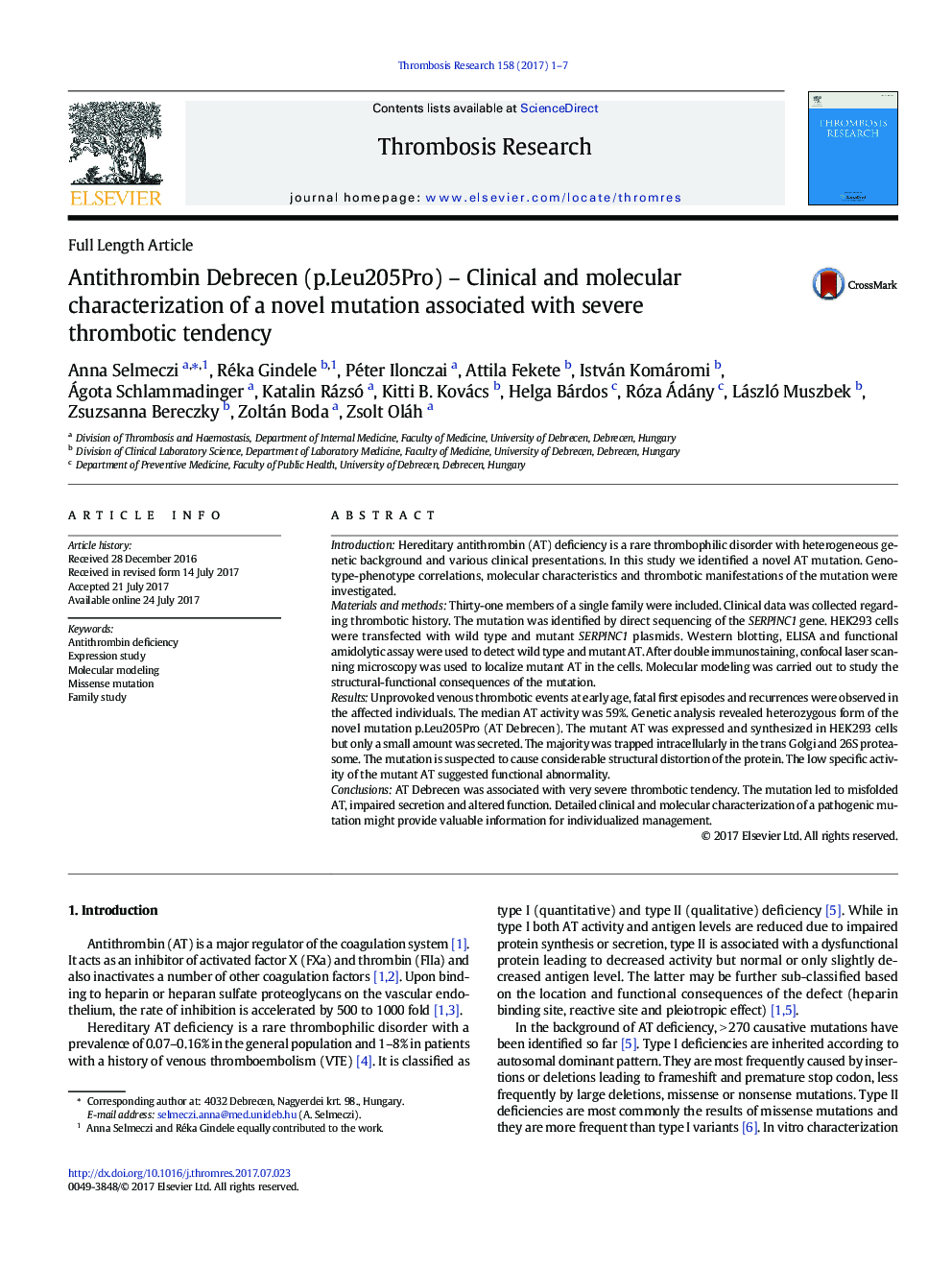| Article ID | Journal | Published Year | Pages | File Type |
|---|---|---|---|---|
| 5621784 | Thrombosis Research | 2017 | 7 Pages |
â¢A novel p.Leu205Pro mutation was detected in a large antithrombin deficient familyâ¢It was associated with very severe thrombotic tendencyâ¢Mutant antithrombin may accumulate in transâGolgi network and 26S proteasomeâ¢The mutation leads to quantitative AT deficiency combined with functional alteration
IntroductionHereditary antithrombin (AT) deficiency is a rare thrombophilic disorder with heterogeneous genetic background and various clinical presentations. In this study we identified a novel AT mutation. Genotype-phenotype correlations, molecular characteristics and thrombotic manifestations of the mutation were investigated.Materials and methodsThirty-one members of a single family were included. Clinical data was collected regarding thrombotic history. The mutation was identified by direct sequencing of the SERPINC1 gene. HEK293 cells were transfected with wild type and mutant SERPINC1 plasmids. Western blotting, ELISA and functional amidolytic assay were used to detect wild type and mutant AT. After double immunostaining, confocal laser scanning microscopy was used to localize mutant AT in the cells. Molecular modeling was carried out to study the structural-functional consequences of the mutation.ResultsUnprovoked venous thrombotic events at early age, fatal first episodes and recurrences were observed in the affected individuals. The median AT activity was 59%. Genetic analysis revealed heterozygous form of the novel mutation p.Leu205Pro (AT Debrecen). The mutant AT was expressed and synthesized in HEK293 cells but only a small amount was secreted. The majority was trapped intracellularly in the transâGolgi and 26S proteasome. The mutation is suspected to cause considerable structural distortion of the protein. The low specific activity of the mutant AT suggested functional abnormality.ConclusionsAT Debrecen was associated with very severe thrombotic tendency. The mutation led to misfolded AT, impaired secretion and altered function. Detailed clinical and molecular characterization of a pathogenic mutation might provide valuable information for individualized management.
